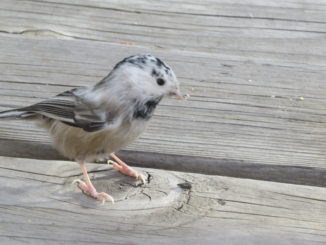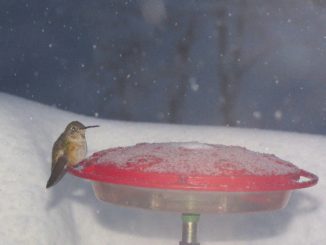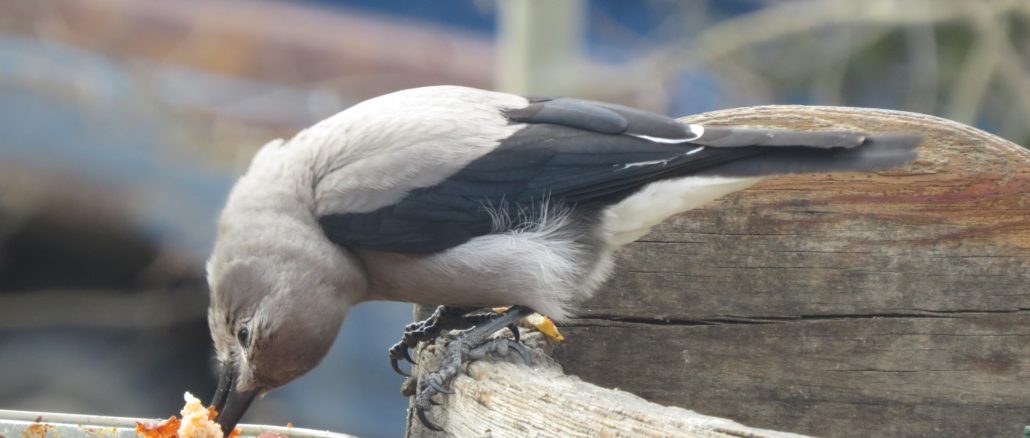
Support Northern Colorado Journalism
Show your support for North Forty News by helping us produce more content. It's a kind and simple gesture that will help us continue to bring more content to you.
BONUS - Donors get a link in their receipt to sign up for our once-per-week instant text messaging alert. Get your e-copy of North Forty News the moment it is released!
Click to Donateby Sally Roth
[email protected]
No house (English) sparrows. No starlings. Up here at 8100’ in north-central Larimer County, where deep snow, bitter cold, and miles of pines and spruces reign, we never see a one of those “feeder hogs” at our spread of seeds, fat, and other bird goodies.
Sound like heaven, bird-feeding friends?
Hang on a minute before you go green with envy. Because what we have—in plenty—are corvids. Birds of the Crow Family. The smartest of all. And, boy, are they good eaters!
The crows themselves only sleep up here, flying in after sunset by the hundreds to a communal roost. Before sunrise, they’re off again, traveling to lower elevations to forage for the day. (Did I say “smart”?)
At the feeder, we have Steller’s jays by the bushel (63, at last count, though I’m probably off by a few dozen). A family of soft, fluffy dark-eyed gray jays, a.k.a. “camp robbers.” A few magpies, which nest down in town but move up here in the winter (um, okay…). A pair of ravens who became regulars as soon as they got their first taste of leftover lasagna.
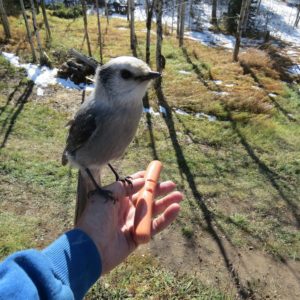
Our family of gray jays—unafraid of humans, like all their kind—may be the southernmost lowest-elevation individuals of this corvid species, according to researchers at Cornell and in Canada, for whom we’ve collected data on our birds.
And this winter, we’re hosting another species of corvid—big, crow-sized Clark’s nutcrackers. In quantity.
Our first ever “Clark” was a lone bird that hung out all winter several years ago, a delight to get to know.
Since then, not a one at the feeder, no matter how often I’d say, “Wish we had a Clark!”
That’s why we were so thrilled when a Clark showed up in late November. The next day, another. “Oh boy! Two Clarks!” Soon it was 3, 4, 5…and now we’re up to 11.
Eleven big, hungry Clark’s nutcrackers squawking all day. Rough translation: “Feed me! Feed me NOW!”
How’s that go, “Be careful what you wish for”?
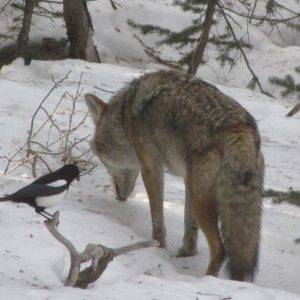
“You gonna eat that? You gonna eat that?” Like other corvids, black-billed magpies are super intelligent—and quick to take advantage of any opportunity for food, including coyote leftovers.
Clarks eat a lot. But they’re not actually eating all that food right away. Like other corvids, Clarks are cachers. They fill their elastic throats with as much food as they can stuff down the hatch, then fly off to hide it—“cache” it—for a rainy, er, snowy day. Then they come back for more. And more. And more.
At the feeder, Clarks want meat, and lots of it. At Thanksgiving, when we had only a trio of the big birds, they stripped an entire 18-pound turkey down to bare bones in three days.
Fat gets gobbled up even faster. And they love nuts.
Notice a theme here? No cheap corn kernels for these guys. Clarks have expensive tastes.
Luckily, we discovered by accident that our new big feathered friends eagerly snatch up dog kibble. Until a dead moose happens to show up in our yard, dry chunks of the cheapest brand suit them just fine.
Yep, hosting corvids can be way harder on the budget than satisfying the appetites of a horde of house sparrows or starlings.
Still, we happily scrimp on our own grocery budget to keep our corvid feeder friends happy. The entertainment value of watching—and learning about—these intelligent birds? You guessed it: Priceless.

